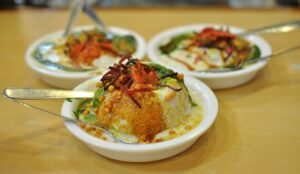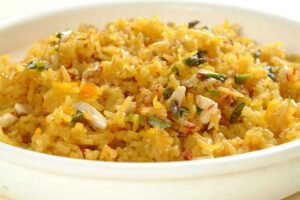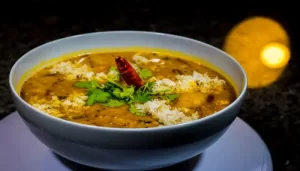Exploring the Vibrant Tapestry of Indian Cuisine
Introduction
Indian cuisine is a vibrant mosaic of flavors, colors, and aromas that has captivated taste buds around the world. With a history spanning thousands of years and a diversity rooted in its regional cultures, Indian food is a celebration of spices, ingredients, and culinary techniques that create a symphony of taste sensations. In this blog, we will embark on a delectable journey through the various facets of Indian cuisine, from its signature dishes to its cultural significance.
A Melting Pot of Flavors
Indian cuisine is often described as a melting pot of flavors due to the extensive use of spices that give each dish its unique character. Spices like cumin, coriander, turmeric, cardamom, and cinnamon are the building blocks of Indian cooking. They are used not only to enhance taste but also to provide a range of health benefits. The art of blending these spices is what sets Indian cuisine apart, creating intricate and balanced flavors that can be both fiery and comforting.
Regional Diversity
India’s vast geography and diverse cultural heritage have contributed to a rich tapestry of regional cuisines. From the robust and meaty dishes of the North to the coconut-infused curries of the South, each region has its own culinary identity. For instance, the North is known for dishes like butter chicken and biryani, while the South boasts dosas, idlis, and sambhar. The East offers dishes like fish curries and sweets like rasgulla, while the West is celebrated for its robust seafood dishes and street food like vada pav.
Street Food Extravaganza
Indian street food is a gastronomic adventure in itself. From the tangy and spicy pani puri to the savory aloo tikki, the streets of India are lined with vendors selling a variety of quick bites that tantalize the taste buds. Whether it’s the iconic chaat, the spicy pav bhaji, or the indulgent chole bhature, street food in India is an integral part of the culinary experience, giving locals and visitors alike a taste of the country’s culinary soul.
Vegetarian Delights
Indian cuisine is a paradise for vegetarians, with an array of plant-based dishes that are as flavorful as they are satisfying. The concept of vegetarianism has deep cultural and religious roots in India, which has led to the development of a wide range of vegetarian recipes. Dishes like paneer tikka, baingan bharta, and dal makhani showcase how vegetables and legumes can be transformed into hearty and delicious meals.
Cultural Significance
Food holds immense cultural significance in India, often being a central element of festivals, celebrations, and family gatherings. Many Indian festivals are associated with specific dishes that are prepared with love and devotion. For instance, Diwali, the festival of lights, is incomplete without indulging in an array of sweets like ladoos and barfis. Similarly, Eid is celebrated with dishes like biryani and kebabs, while Christmas sees homes adorned with homemade sweets like gujiyas and kulkuls.
Indian cuisine is incredibly diverse and rich, with a wide variety of dishes originating from different regions and cultures within the country. Here are some major types of Indian food that showcase the culinary diversity of the nation:-
1.North Indian Cuisine:
- Paneer Tikka: Marinated and grilled paneer (Indian cottage cheese) served with mint
- Butter Chicken: Tender chicken pieces cooked in a creamy tomato-based gravy.
- Chole Bhature:Spiced chickpea curry served with deep-fried bread called bhature.

2.South Indian Cuisine:
- Idli: Steamed rice cakes made from the same batter as dosa, often served with chutney and sambar.
- Uttapam:Thick pancake made from the dosa batter, topped with various vegetables.
- Dosa:Thin, crispy crepe made from fermented rice and lentil batter, served with chutney and sambar (spicy lentil soup).
3.East Indian Cuisine:
- Panta Bhat: Fermented rice soaked in water and served with green chilies, onions, and fried fish, typically enjoyed during festivals.
- Mishti: Bengali sweets like rasgulla (spongy sweet balls in syrup) and sandesh (milk-based sweet).
- Luchi with Aloo Dum: Deep-fried bread served with spicy potato curry.
4.West Indian Cuisine:
- Vada Pav: Spicy potato fritter served in a bun, often referred to as the “Indian burger.”
- Dhokla: Steamed and spongy cake made from fermented rice and chickpea flour, usually served with chutney.
- Gujarati Thali: A platter featuring a variety of vegetarian dishes, like dal, vegetables, roti, and sweets.
- Seafood Delicacies: Coastal regions like Goa are known for their flavorful seafood dishes like vindaloo (spicy curry) and fish curry rice.
Indian cuisine is renowned worldwide for its unique and diverse characteristics, making it truly special and distinct from other culinary traditions. Here are some of the key aspects that make Indian cuisine stand out:
- Diversity: Indian cuisine is incredibly diverse, with each region of the country having its own distinct flavors, ingredients, and cooking techniques. North Indian cuisine differs from South Indian, and within each of these regions, there are further variations.

- Spices: Indian food is famous for its use of spices. A wide array of spices like cumin, coriander, turmeric, cardamom, and chili peppers are used to create complex and aromatic flavors.
- Vegetarian Options: India has a long history of vegetarianism, and a significant portion of its population follows a vegetarian diet. This has led to the development of a rich and varied tradition of vegetarian dishes, with ingredients like lentils, chickpeas, and paneer (Indian cottage cheese) taking center stage.
- Tandoori Cooking: Tandoor ovens are a distinctive feature of Indian cuisine. They are used to cook a variety of dishes like naan bread, tandoori chicken, and kebabs, imparting a unique smoky flavor.
- Breads: Indian bread, such as naan, roti, and paratha, are an integral part of Indian meals. They come in various forms and are often used to scoop up curries and other dishes.
- Street Food: Indian street food is a vibrant and integral part of the culinary culture. From chaat (a mixture of spicy, tangy, and sweet snacks) to dosa (a thin, crispy pancake), street food offers a delightful and affordable way to experience Indian flavors.
- Curries: India is synonymous with curries, which come in a wide range of styles and flavors. Whether it’s the rich and creamy butter chicken or the spicy and tangy vindaloo, there’s a curry for every palate.
- Regional Specialties: Each region of India has its own specialty dishes. For example, in the north, you’ll find dishes like biryani and kebabs, while the south is known for its dosas and idlis. In the west, you have dishes like dhokla, and in the east, you’ll find sweets like rasgulla.
- Ayurvedic Influence: Indian cuisine has a strong connection to Ayurveda, an ancient system of medicine and wellness. Many Indian dishes are prepared with ingredients that are believed to have health benefits and balance the body.
- Cultural Significance: Food plays a significant role in Indian culture and traditions. Festivals, weddings, and other celebrations are often marked by elaborate feasts and special dishes.
- Hospitality: Indian hospitality is known for its warmth and generosity. Guests are often welcomed with open arms and offered a wide array of dishes to enjoy.

- Diversity: Indian cuisine is incredibly diverse, with each region of the country having its own distinct flavors, ingredients, and cooking techniques. North Indian cuisine differs from South Indian, and within each of these regions, there are further variations.
Culinary Techniques: Indian cuisine employs a variety of cooking methods, including frying, grilling, steaming, and slow cooking. Each technique contributes to the complexity of flavors in Indian dishes.
Health Benefits: Many Indian spices and ingredients are believed to have medicinal properties and health benefits. Turmeric, for example, is known for its anti-inflammatory properties.
Food Presentation: Indian cuisine places a strong emphasis on the visual appeal of dishes. Elaborate garnishes, colorful ingredients, and artistic plating are common.
Regional Rice Varieties: India is home to numerous varieties of rice, each with its own unique flavor and texture. Basmati rice is one of the most famous and is prized for its fragrance and long grains.
Tea Culture: India is one of the world’s largest tea producers, and tea plays a significant role in Indian culture. Chai, a spiced tea with milk, is a beloved beverage enjoyed throughout the country.
Street Food Culture: Indian street food vendors offer an incredible array of dishes, from pani puri (hollow crispy balls filled with spicy water) to kebabs and samosas. These snacks are an integral part of daily life.
Food Etiquette: Indian dining etiquette varies by region and can be quite intricate. For instance, it’s common to eat with your hands in many parts of India, but utensils may be used in others.
Food Preservation: Traditional methods of food preservation, such as pickling and sun-drying, are still widely practiced in India to extend the shelf life of fruits and vegetables.
Fusion Cuisine: In recent years, there has been a rise in fusion cuisine in India, blending traditional Indian flavors with international culinary influences.
Regional Beverages: Beyond tea, India offers a variety of regional beverages. For instance, lassi is a yogurt-based drink, while sugarcane juice and kokum sherbet are popular in specific regions.
Cooking Classes and Culinary Tourism: Many travelers visit India to take cooking classes and immerse themselves in the country’s culinary traditions. This has led to the growth of culinary tourism.
Sustainable Practices: With an increasing awareness of sustainability, many Indian chefs and home cooks are exploring eco-friendly cooking methods and sourcing local, organic ingredients.
Food Festivals: India hosts numerous food festivals that celebrate regional cuisines and showcase diverse dishes. These festivals are a culinary delight for both locals and tourists.
Community and Family Meals: Indian meals often revolve around the concept of sharing and communal eating. Family gatherings and celebrations are centered around feasting together.
Catering to Dietary Restrictions: Indian cuisine is versatile and can be adapted to various dietary preferences and restrictions, making it inclusive for vegetarians, vegans, and those with gluten or lactose intolerance.
Global Influence: Indian cuisine has had a significant impact on global food trends, with Indian restaurants and flavors being embraced worldwide.
Culinary Traditions and Rituals: Many Indian festivals and rituals involve specific food preparations and offerings to deities, reflecting the deep connection between food and culture.
